April 15, 2025 | 00:48 GMT +7
April 15, 2025 | 00:48 GMT +7
Hotline: 0913.378.918
April 15, 2025 | 00:48 GMT +7
Hotline: 0913.378.918
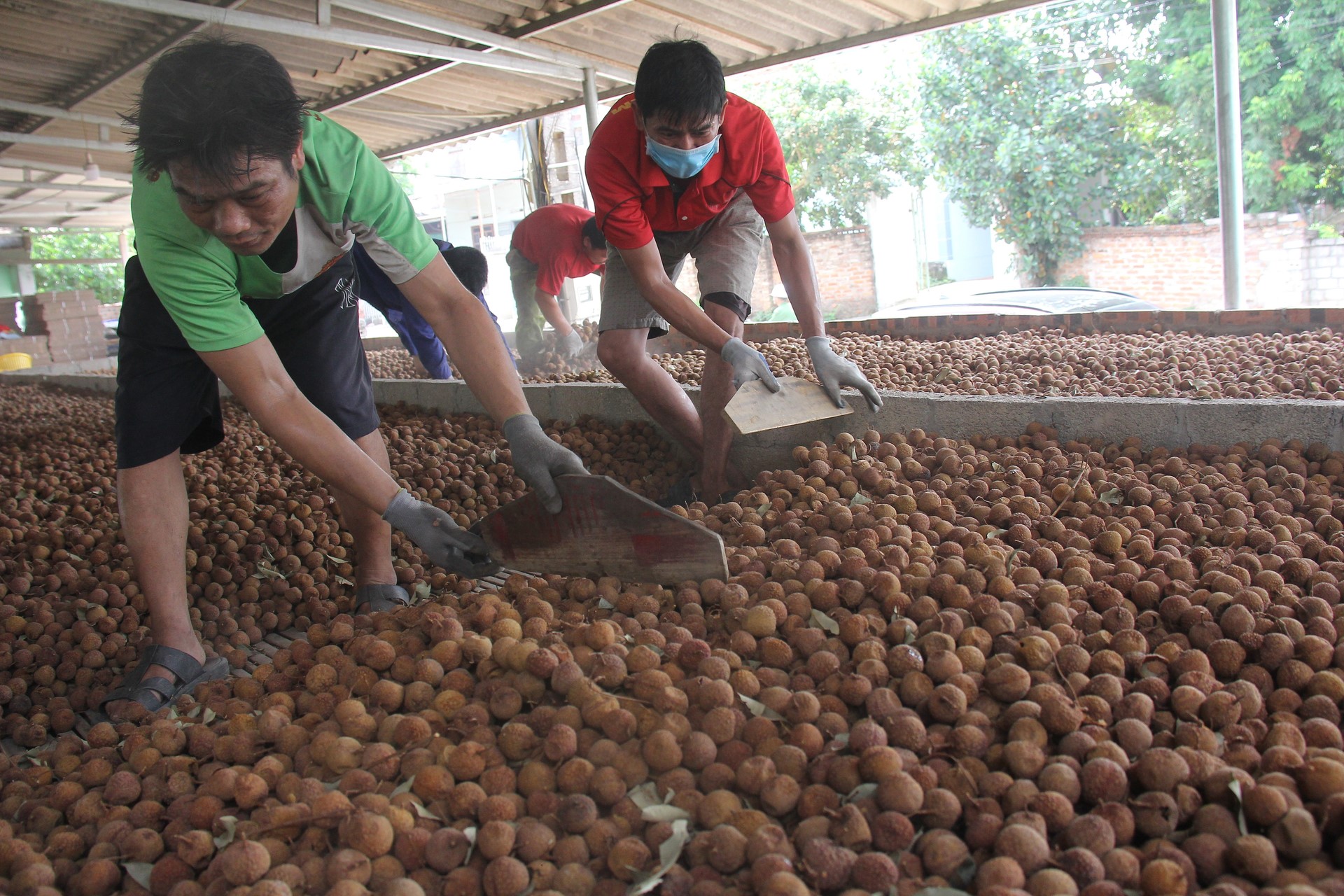
This year, the kilns helped consume a significant amount of lychee for Luc Ngan. Photo: Nguyen Huong.
The lychee harvest crop in Luc Ngan (Bac Giang) is coming to the end of the season, and this year’s consumption is considered more favorable and faster than every year. With a lychee area of more than 17,300 ha (an increase of more than 1,600 ha compared to 2022) and an estimated output of 98,000 tons, the Luc Ngan’s authorities and locality always pay attention to developing plans to consume lychee, such as promoting domestic consumption and export via e-commerce channels, drying, processing, and especially this year’s model of selling at the garden to tourists that has obtained more results.
The whole Luc Ngan district currently has more than 3,000 lychee drying kilns, which are expected to dry approximately 9,500 tons by brazier and 500 tons by electric furnace and boiler. In addition, approximately 3,200 tons will be refrigerated and industrially processed. These days, in addition to actively harvesting fresh lychees for domestic and export markets, lychee drying kilns also increase their operating capacity to help reduce the pressure on the crop.
In Luc Ngan district, Mr. Vi Thanh Luan's family in Hang Bong hamlet, Hong Giang commune, is one of the few households drying lychee with technological kilns (electric drying). With two drying kilns invested for approximately VND 600 million and having capacity of 12 tons/batch, Mr. Luan expects to dry approximately 200 tons of fruit for this crop.
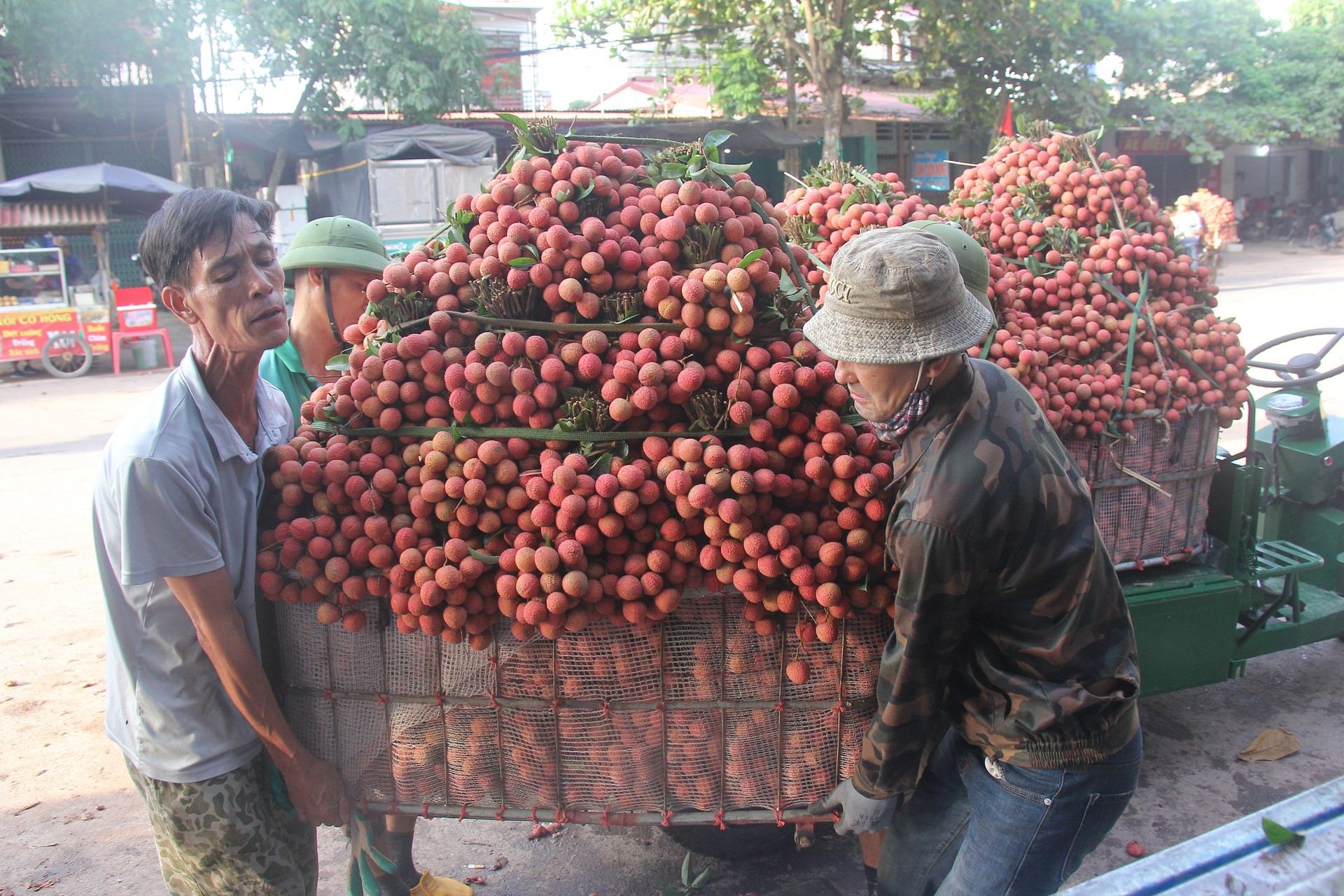
The diversification of channels serving deep processing has helped reduce the pressure on fresh lychee consumption. Photo: Nguyen Huong.
"This year, the dried lychee commodity continues to have positive signs, so since the beginning of the season, my family has focused our capital to buy fresh lychees from people at the price of VND 8,000–9,000/kg and has dried more than 100 tons. Currently, the price of dried lychee ranges from VND 45,000 to VND 50,000/kg. Compared to drying with a brazier, electric drying makes the lychee flesh softer and more delicious," said Mr. Luan.
At this time, Global Export and Import Foodstuff JSC, Phuong Son commune (Luc Ngan), is also strengthening the purchase of lychee from people to serve the processing of products such as juice, frozen and canned lychee, etc. Besides purchasing lychee for sale at markets, many traders also collect goods to supply domestic fruit processing factories.
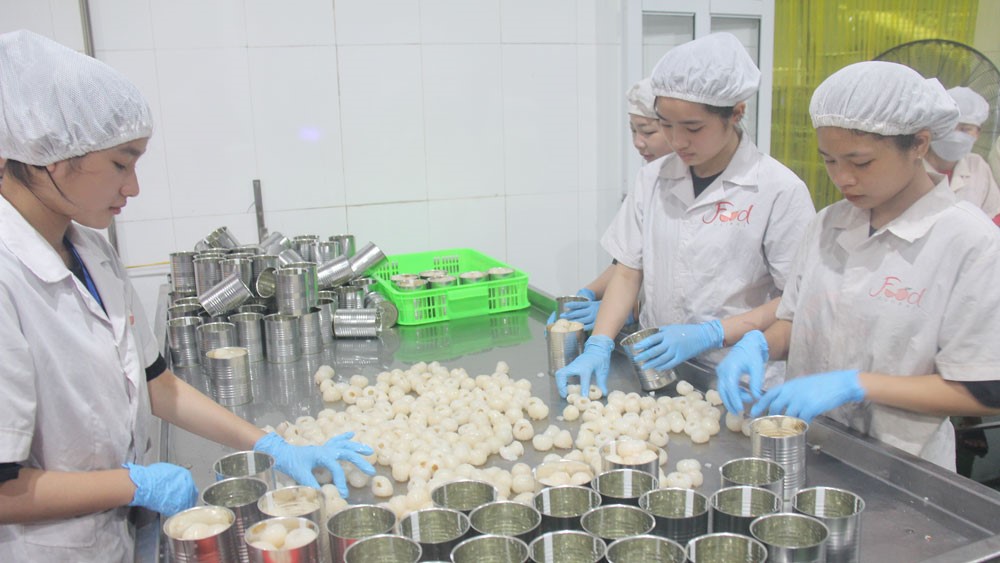
Lychees are processed and canned. Photo: Nguyen Huong.
Luc Ngan district estimates that in this year's lychee crop, 78,300 tons of fresh lychee will be consumed, of which 35,000 tons will be consumed for domestic consumption and 43,300 tons will be exported. As of June 30, the total number of fixed lychee weighing points was 235, including large and small points, which consumed more than 80% of the output. Lychee is consumed in the Northern market, mainly in Hanoi, Hai Phong, Ninh Binh, Ha Nam, Hung Yen, Thanh Hoa, etc., and in southern provinces and cities such as Ho Chi Minh City, Binh Duong, and Dong Nai, and exported to the markets of China, Cambodia, Korea, Japan, the United States, Thailand, etc.
As for the domestic market, the district has connected and promoted trade with distribution groups, wholesale markets, businesses, traders, and e-commerce platforms to consume products. Leading retailers and distributors in Vietnam, such as Saion Co.op., Go!, BigC, Tops Market, Co.opmart, or MM Mega Market, have been actively participating in lychee consumption.
In addition, the district pays attention to selling lychee through e-commerce channels and social networks (estimated at 7,000 tons). Many participating cooperatives have sold large quantities of lychees via social networks and e-commerce platforms, such as Luc Ngan Green Cooperative, Binh Nguyen Clean Agricultural Cooperative, Hong Xuan Production and General Service Trading Agricultural Cooperative, Hoang Vu Clean Agricultural Cooperative, etc.

The strengthening of e-commerce and deep processing has contributed to reducing the pressure of direct consumption at purchasing points. Photo: Nguyen Huong.
In particular, this year, Luc Ngan has innovated in organizing communication events about lychee, making an impression and attracting the attention of a large number of people to visit and buy products at the garden. Mr. Ngo Van Hung in Cau Den village, Thanh Hai commune, said: "My family has more than 2 ha of lychee produced according to GlobalGAP standards. My family now has sold more than 2 tons but has not had to carry any baskets to the market for sale because we have mainly sold to tourists and patrons ordering as gifts at a higher price than at the weighing point".
According to Mr. Nguyen The Thi, Vice Chairman of the Luc Ngan People's Committee, with the motto of valuing all markets, Luc Ngan district has implemented many solutions to promote consumption and promote products, such as promoting lychee consumption to domestic and foreign markets, inviting traders, large enterprises, and drying kiln owners to participate in consumption and processing.
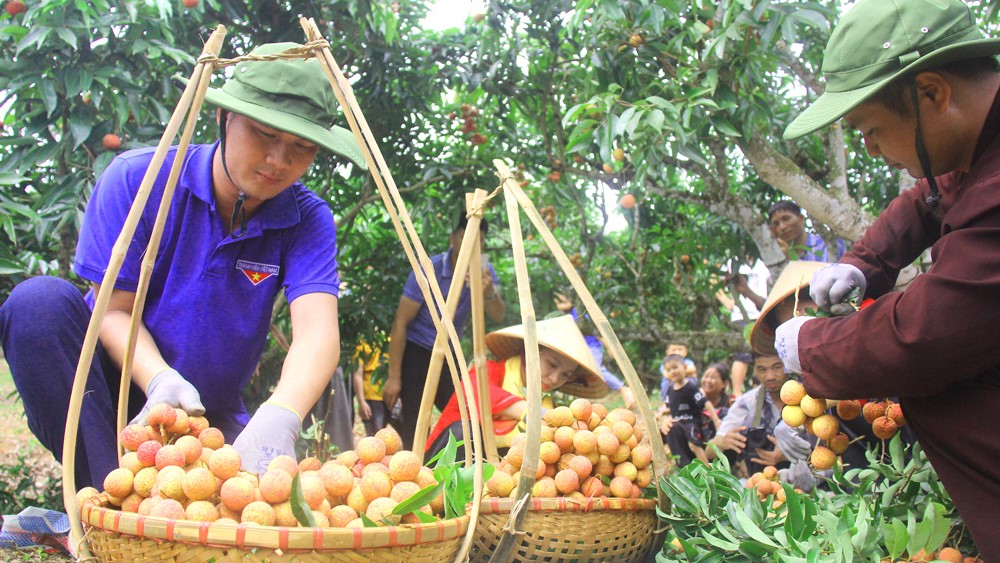
This year is the first time for Luc Ngan to methodically organize the lychee season tourism activity, thereby opening up a new consumption channel and direction. Photo: Nguyen Huong.
At the same time, the district also creates the most favorable conditions for people, businesses, organizations, and individuals involved in processing and consuming lychee. Actively set up delegations to survey, research, and connect trade in Guangxi and Yunnan provinces (China); to survey and exchange information at wholesale markets in Ho Chi Minh City and Dong Nai province. Pay attention to dissemination so that people strictly comply with the requirements and standards on harvesting, preliminary processing, packaging of products before selling, etc.
Besides the positive results achieved, at present, Luc Ngan lychee is still mainly exported as fresh fruit; a few are processed and canned, juiced, and dried, with the output and quality after processing still not commensurate with the potential and advantages. The capacity of enterprises and cooperatives in the district and province to approach, negotiate, and sign cooperation agreements for lychee exports to foreign markets is still limited. If these limitations are overcome, it is certain that in the following crops, the consumption market for lychee will be more sustainable and stable.
Translated by Huyen Vu Thu
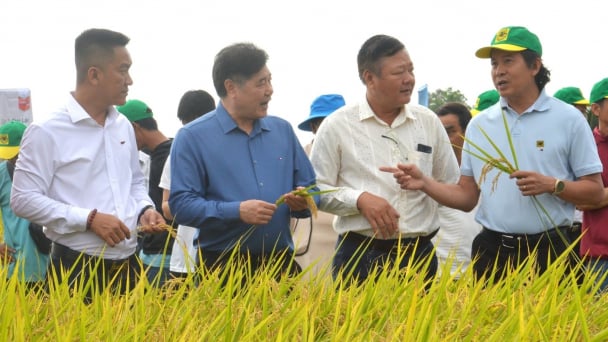
(VAN) The results from pilot fields are catalyzing the expansion of the One million hectares of high-quality, low-emission rice project in Kien Giang.
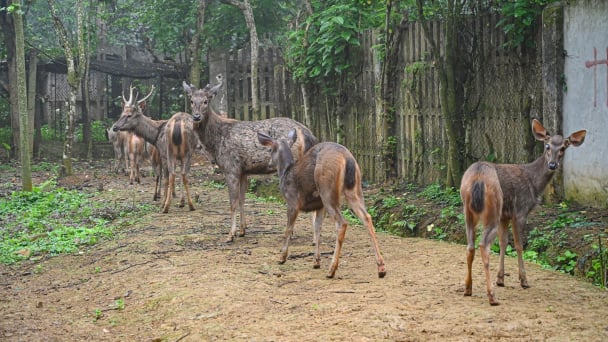
(VAN) On the morning of April 11, Cuc Phuong National Park received 18 individuals of endangered and rare wild animals from Da Nang city.
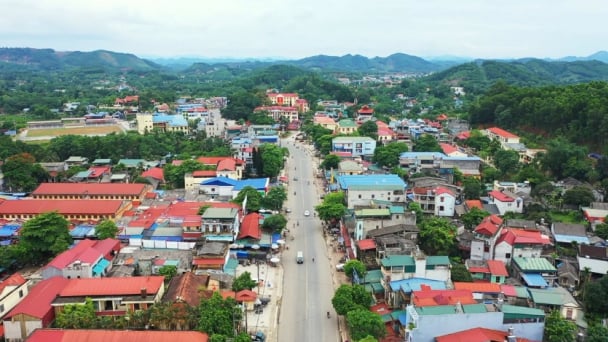
(VAN) FAO supports Vietnam in enhancing survey sampling techniques for the 2025 nationwide agricultural and rural census.
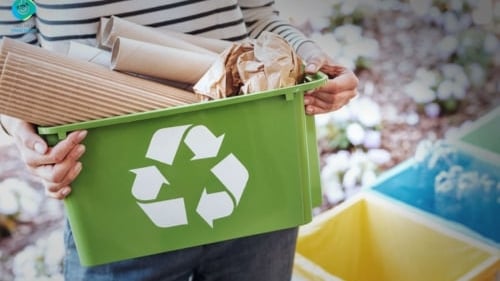
(VAN) By participating in the green transition, manufacturers become an indispensable part of the circular economy, contributing to resource optimization and environmental protection.

(VAN) The One Million Hectares of High-Quality and Low-Emission Rice Program can generate nearly 14 million tons of straw annually, posing an urgent requirement to diversify straw-based products.
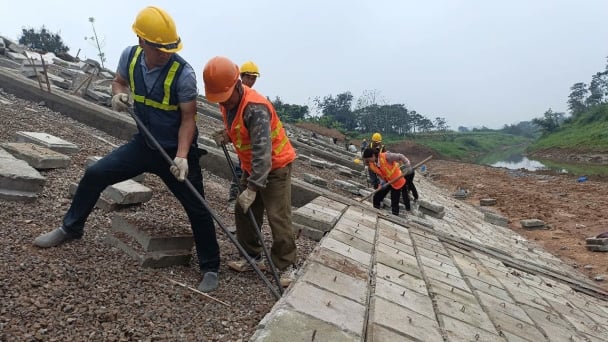
(VAN) This figure was recently announced at a conference held in Yen Bai, focusing on climate-resilient infrastructure development for ethnic minority regions.

(VAN) The evacuation center is a practical work in efforts to respond to natural disasters and adapt to climate change in vulnerable areas.